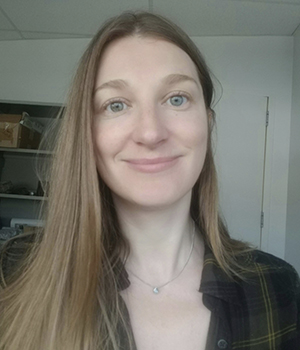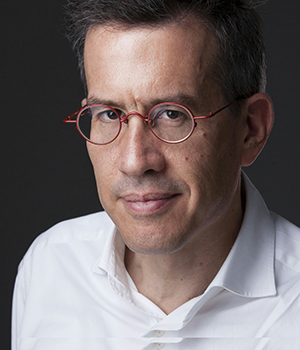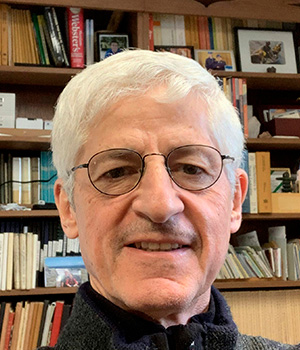Geochronology is a fundamental discipline in the geosciences, yet it is often undervalued. Since the 1990s, however, the work of Jean David, a geochronologist at the MNRF, has significantly enhanced our understanding of the lithostratigraphy of Quebec’s territory and has provided temporal constraints on major metalliferous events. To honour the invaluable contributions of Jean’s work, the presentations in this session will highlight the many applications of geochronology, drawing on examples from both Quebec and elsewhere. We will come to realize that geochronology is far more than a tool for calculating ages – it is a powerful means of deepening our understanding of Earth’s tectonic evolution.
Geochronology: An Essential Pillar of the Geosciences — tribute to Jean David
Wednesday, November 19, 2025
Room 403 – Espace géoscientifique

1:30 p.m.
Welcome Address
This talk presents a major scientific contribution by Jean David: the development of a U/Pb geochronological calendar for Nunavik. At the turn of the 21st century, the ambition of the Far North program was to produce the first integrated geological map of Nunavik. In this context, Jean David demonstrated that U/Pb geochronology could be used as a regional mapping tool. When he reported the discovery of inherited zircons dated at over 3 billion years old, he launched the hunt for klippes of very old rock that might represent remnants of a primordial basement. The indicative sample, taken along the east coast of Hudson Bay, yielded an age of 3.8 billion years. It was not only the oldest dated rock in the world, it also established with certainty the continental bedrock on which all the lithologies mapped in the Far North have coalesced, the geological calendar of Nunavik drawn up by Jean David made it possible to base stratigraphic nomenclature on conclusive data. The final report on the Far North program lists 143 U/Pb datings carried out for Géologie Québec. Jean David alone carried out 142 of these, in collaboration with 11 team leaders. His legacy is now indispensable in telling the geological history and framing the mineral potential of Québec's Far North. The excellence of his scientific contribution deserves to be highlighted.
Zircon U-Pb geochronology has long been central to deciphering the earliest histories of terrestrial planets. The Martian regolith breccia NWA 7034/7533 (“Black Beauty”) now provides the richest zircon archive from Mars, enabling unprecedented insights into its differentiation and geodynamic evolution. High-precision U-Pb dating combined with Lu-Hf isotope measurements demonstrates that Mars accreted, formed a core, and crystallized its magma ocean within ~20 Myr of Solar System formation. By 4.547 Ga, a primordial andesitic-like crust was established, making the oldest zircon source reservoir identified on any planet. Zircons between 4.48 and 4.43 Ga record reworking of this enriched crust during intense impact bombardment, possibly linked to the early migration of gas giant planets. These data reveal that the igneous activity of early Mars was dominated by impact-related recycling of a long-lived primordial crust rather than generation of juvenile crustal additions. In contrast, a population of younger zircons (1.5-0.3 Ga) documents magmatism in the Elysium and Tharsis provinces. Their chondritic-like initial Hf isotope signatures require the persistence of a primitive, convecting mantle reservoir throughout most of Mars’s history, consistent with a stagnant-lid tectonic regime. Together, these results show that zircon is more ubiquitous on Mars than once thought and provides a continuous 4.2-Gyr archive of crust-mantle interaction. The Martian zircon record illustrates the power of U-Pb geochronology, pioneered on Earth, to reveal the tempo of planetary differentiation, the longevity of primordial reservoirs, and the role of impacts in shaping planetary crusts.
2:30 p.m.
Jean David: Geochronologist, Oenologist and Musician

Jean David was born in Saint-Hyacinthe in 1956. His father was a watchmaker. Jean spent most of his career dating zircons. As he liked to say: everything is in everything.
After obtaining his doctorate in geology from the Université de Montréal in 1992, Jean joined GEOTOP, where for more than 30 years he became the leading specialist in U-Pb geochronology on zircons. Having begun his career as a specialist in sedimentology, he bridged the gap between this discipline and Appalachian geochronology as part of his doctorate.
In addition to his geochronology mandates with Géologie Québec (MRNF), Jean has contributed to nearly 25 scientific articles published in peer-reviewed journals, including 5 as first author. The most outstanding paper of his career was the one on the oldest rock in Québec found in the Nuvvuagittuq Archean belt in Nunavik, which he published in 2009 with four collaborators. His geochronological work has covered the Superior, Churchill, Grenville and Appalachian geological provinces, and even the southern part of the São Francisco (Minas Gerais) Archean craton in Brazil. Jean David has also contributed to the national LITHOPROBE project.
Beyond his scientific expertise, Jean was a knowledgeable oenologist who knew and loved to share his passion for good wine. He was also an accomplished musician, playing both the clarinet and the drums, and an enlightened music lover — a passion we shared.
2:50 p.m.
Break
3 p.m.
Damn Rocks! What Do Nitrogen and Noble Gas Isotopes Tell Us About the Nuvvuagittuq Belt?

The Nuvvuagittuq Greenstone Belt contains some of the oldest rocks found on Earth, with zircon Eoarchean ages and Hadean ages for the magmatic protoliths. These rocks have attracted the interest of many groups working in exobiology and primitive Earth, because, due to their ages, they offer a rare and invaluable insight into the Earth’s origins. But few groups have focused their studies on isotopes of volatile elements, such as nitrogen and noble gases. The latter (He, Ne, Ar, Kr and Xe) are rare and chemically inert elements, meaning their isotopic signatures are preserved even though the rocks themselves are highly metamorphosed, and they can tell us about the terrestrial reservoirs at the source of these gases—the crust, atmosphere and mantle of the time. In this presentation, we will review the results obtained over the years on the isotopes of these volatile elements, in particular those of nitrogen (d15N) and Xe (128-136Xe), and their implications for the state of the planet at that time.
3:20 p.m.
Archean Inheritance in Paleoproterozoic Orogens: Example of the Southeastern Churchill Province, Trans-Hudson Orogen, Canada

Deciphering the genesis and evolution of crustal lithotectonic blocks and defining their boundaries is essential to understanding crustal assembly processes and identifying new ore systems. However, small ancient crustal masses and craton margins are often reworked by successive orogenic cycles, obscuring primary geological records and complicating tectonic reconstructions. This study presents a comprehensive geochronological synthesis of the Southeastern Churchill Province (SECP), within the Trans-Hudson Orogen in Quebec. New time-space diagrams and distribution maps of Archean to Paleoproterozoic bedrock units provide a refined framework for interpreting tectonic history and cratonization processes. The SECP records: TTG magmatism (~2920-2735 Ma) forming the newly defined Koksoak Domain; hybrid and orthopyroxene-TTG magmatism (~2735-2690 Ma) at its margins; tholeiitic to calc-alkaline volcanism, partial melting, and basin development (~2690-2620 Ma) under extensional tectonics; followed by tectonic quiescence until ~1.9 Ga. The Koksoak Domain shares magmatic affinities with the Douglas Harbour Domain (NE Superior Craton) and possibly the Meta Incognita microcontinent, defining the new Ungava Bay Terrane. Paleoproterozoic records reveal lithospheric-scale reactivation of inherited structures, limited strike-slip displacement of Archean blocks, and structural control on the distribution of carbonatitic and Ni-Cu mafic-ultramafic systems. Tracking lithotectonic blocks and their boundaries through time remains crucial, especially in polyorogenic terranes.
4 p.m.



